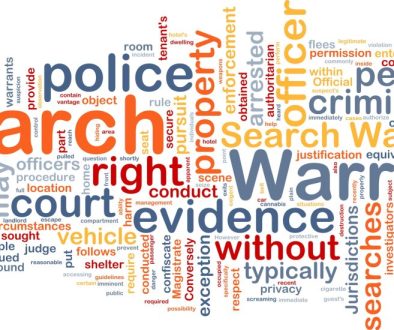The Most Common Gun Crimes, Mandatories, & Guidelines in PA?
.jpg)
Illegal gun and firearm offenses charge are obviously serious in Pennsylvania as most charged as felony offenses where a person faces the possibility of state incarceration even for a first time offense. While I’ve written articles about ways to challenge a gun charge focused on reasonable suspicion, probable cause, as well as actual and constructive possession this article focuses on sentencing consequences in the event that your defense isn’t successful. Check out my videos on gun crimes as well!
What Are the Most Common Gun Crimes In Pennsylvania?
The most common gun charges in Pennsylvania are Violations of Section 6105, Section 6106, and Section 6110.2 of the Uniform Firearms Act (Title 18, Chapter 61, Section 6101). Section 6105 is the possession of a firearm by a person prohibited by law. Section 6106 is the possession of a firearm by a person without a license. Section 6110.2 is the possession of a firearm which has an obliterated or altered manufacture’s serial number. Section 6108 (Illegal carrying a gun or firearms on the Streets of Philadelphia) is a Misdemeanor Offense.
I’ve written previous articles on these subsections of the Uniform Firearms Act and I encourage you to read them for more information on these criminal charges.
While these gun and firearm crimes are violations of Pennsylvania Uniform Firearm’s Act, none of them carry with them a mandatory minimum sentence with exception to a violation of section 6111(g)(2)—the illegal sale or transfer of a gun or firearm to an unauthorized or unqualified person
Any person, licensed dealer, licensed manufacturer or licensed importer who knowingly or intentionally sells, delivers or transfers a firearm under circumstances intended to provide a firearm to any person, purchaser or transferee who is unqualified or ineligible to control, possess or use a firearm under this chapter commits a felony of the third degree and shall in addition be subject to revocation of the license to sell firearms for a period of three years.
6111(h)(1) explains the penalty for a violation of section 6111(g)(2) and the mandatory minimum sentencing portion of it. This section was created following the death of Police Officer Bradley Fox and is sometimes referred to as the “Brad Fox Law.” Specifically, for all second or subsequent violations the person faces the following 5 year mandatory minimum for each transfer:
A second or subsequent violation of this section shall be a felony of the second degree. A person who at the time of sentencing has been convicted of another offense under this section shall be sentenced to a mandatory minimum sentence of imprisonment of five years. A second or subsequent offense shall also result in permanent revocation of any license to sell, import or manufacture a firearm.
How Do Pennsylvania Judges Determine a Sentences For Gun Crime Convictions?
While all of these charges are serious felony offenses in Pennsylvania, they vary with regards to the harshness of the criminal consequence following a conviction. While some people may believe that a judge randomly chooses a sentence following a plea or a trial, Pennsylvania, like most states, maintains sentencing guidelines based on offenses and a person’s prior criminal history. The Pennsylvania sentencing matrix is a table which judges utilize prior to sentencing a criminal defendant. While a judge isn’t bound by sentencing guidelines, most will give sentences within those guidelines to avoid an improper sentence appellate issue.
What Is The Pennsylvania Sentencing Matrix?
The sentencing matrix is divided into a horizontal and vertical axis. The vertical axis is based on the offense gravity score (OGS) of a crime and the horizontal axis is based on a criminal defendant’s prior record score (PRS). With regards to gun crimes, the OGS varies from as high as a 10 to as low as a 2 for certain misdemeanor firearm offenses. Violations of Section 6105 can range from as high as a 10 to as low as a 4. Violations of Section 6106 can range from as high as a 9 to as low as a 3. Violations of 6110.2 can vary from a 10 to a 9. The range of the OGS depends on the circumstances surrounding a person’s arrest and whether or not the gun was loaded at the time of that arrest. The higher the OGS, the more of a severe sentence a criminal defendant faces following a conviction. For example, the guidelines for a first time offender convicted of a gun crime with an OGS of 10 are 22-36 months and 12-24 months for an OGS of 9. A gun crime with an OGS of 3 however faces restorative sanctions to 1 month in jail which more than likely means probation.
The guidelines increase from that point and a person with a prior felony or even multiple misdemeanor conviction in some cases faces a higher criminal penalty. For example, a person with a gun conviction with an OGS of 10 and a prior conviction for another gun crime or a prior possession with the intent to deliver could face 42 to 54 months instead of 22 to 36 months for that same offense.
What Is The Deadly Weapon Enhancement For Gun Crimes In Pennsylvania?
These standard sentencing guidelines, however, don’t take into account the deadly weapon sentencing enhancement which District Attorney’s frequently argue for following a conviction and I encourage you to read that article on this topic. In addition to sentencing guidelines based on OGS and PRS, the sentencing matrix also includes mitigation and aggravation ranges which judges must take into account prior to imposing a sentence. Mitigation and aggravation can increase or decrease sentencing guidelines by as much as a year depending on the amount of mitigation a defense attorney provides to a judge.
Gun and firearm charges are serious in Pennsylvania and for more information on this important topic I encourage you to read my book and subscribe to my monthly newsletter which provides more information and criminal defense strategies on this subject.



